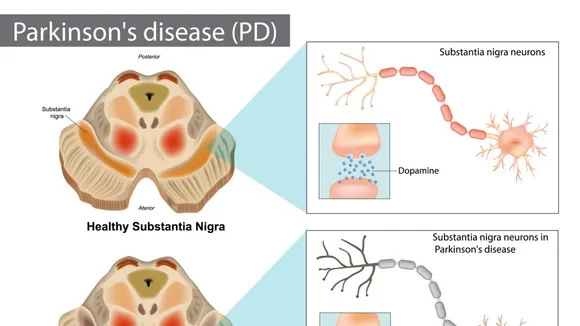
In a groundbreaking study, researchers at the Champalimaud Foundation have unraveled the complex role of dopamine in the brain, shedding light on its significant influence on motor functions and the implications for Parkinson’s Disease (PD) treatment. Once primarily associated with pleasure and reward, dopamine is now at the forefront of understanding movement initiation and duration, offering fresh perspectives on the challenges of PD.
Deciphering the Dance of Dopamine
The study’s innovative approach involved genetically modified mice, designed to make their dopamine neurons glow upon activation. This luminescence allowed scientists to witness firsthand the behavior of these neurons during various movement sequences. One of the most striking discoveries was the lateralization effect of dopamine: neurons are more vigorously active when the mouse engages the paw on the opposite side of the observed brain hemisphere. Moreover, the intensity of this neural activity closely aligns with the length of the movement sequence, revealing a nuanced understanding of how dopamine orchestrates motor functions.
Link to Parkinson’s Disease: A New Chapter
These findings have significant implications for Parkinson’s Disease, a condition traditionally viewed through the lens of dopamine deficiency. PD affects over 10 million people worldwide, with patients experiencing tremors, stiffness, and slowing of movement. The Champalimaud Foundation’s research offers a promising new direction for treatment strategies by highlighting the asymmetric manifestation of PD symptoms and the potential for targeting specific types of dopamine neurons affected by the disease.
A Convergent Path to Understanding PD
Further research into the electrophysiological properties, synaptic activity, and gene expression differences in dopaminergic neurons from healthy controls, sporadic PD patients, and PD patients with E326K GBA1 mutations has unveiled a critical piece of the PD puzzle. This study found reduced sodium currents and synaptic activity in PD patients with E326K GBA1 mutations, pointing to a potential key contributor to PD pathophysiology. Additionally, distinct electrophysiological alterations were observed in sporadic PD DA neurons, with unique dysregulated pathways identified in both groups. These findings underscore impaired synaptic activity as a convergent functional phenotype in DA neurons from PD patients, regardless of the genetic background or sporadic nature of the disease, emphasizing the role of the brain’s extracellular matrix in PD pathology.
In a collective stride towards unraveling the mysteries of Parkinson’s Disease, these studies illuminate the nuanced role of dopamine in movement and its pivotal implications for developing tailored management strategies. By understanding the specific types of dopamine neurons affected in PD, researchers are paving the way for innovative treatments that could significantly improve the quality of life for millions of patients worldwide. The journey to decode Parkinson’s Disease continues, but with each discovery, we edge closer to a world where PD no longer dictates the limits of human movement.



